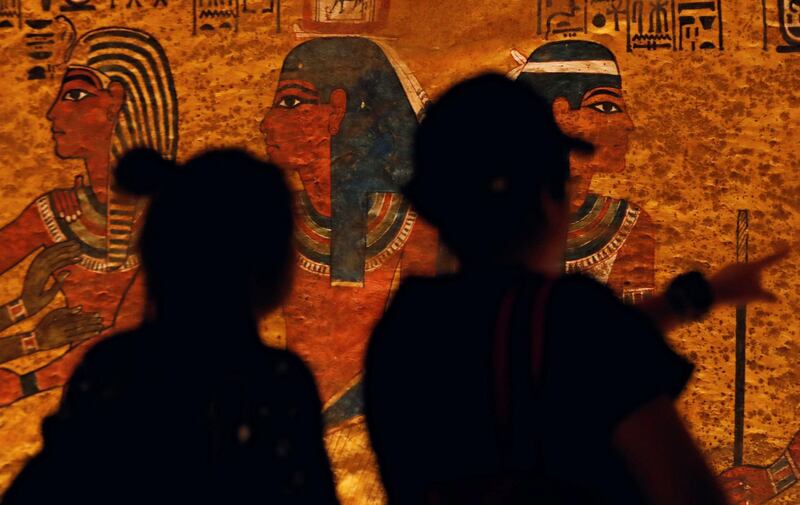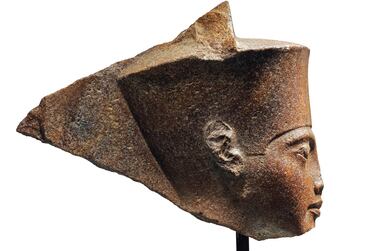For years now, Egypt's antiquities authorities have carefully monitored auctions and exhibitions of ancient artefacts to see if they include pieces that might have been taken out of the country illegally. When an object is identified as such, they frantically contact the sellers or curators and use diplomatic channels to demand its immediate return.
The homecoming of such objects is celebrated, with reports of their recovery betraying a nationalist slant and showering lavish praise on the officials responsible.
This happens even when the pieces in question are not rare or of relatively little historical or artistic significance. It is a whole different ball game when the artefact being pursued is linked to King Tutankhamun, the definitive symbol of Egypt's ancient civilisation.
The tomb of the 18th dynasty pharaoh was discovered by the English Egyptologist Howard Carter nearly a century ago in the Valley of the Kings on the Nile river's western bank in the southern city of Luxor. Artefacts connected to Tutankhamun have proved to be a big draw for tourists and museum goers wherever they are shown.
So when Christie's auction house announced it was putting under the hammer in London a brown quartzite head of King Tutankhamun that is more than 3,000 years old and which portrays him as the ancient god Amun, Egyptian officials went into crisis mode.
Working through the foreign ministry, Cairo's embassy in London and direct contacts with Christie's, the Egyptians expressed concern that the artefact might have been taken out of Egypt illegally.
Christie's insists that the head was acquired legally and had been a part of the Resandro collection, the world's most famous private collection of Egyptian art, for decades. Egyptian antiquities officials are not convinced but have provided no evidence to back their suspicions. They have in the past enlisted Interpol's help to regain artefacts and might do so in this case.
Egypt makes its claims based on a law passed in 1983 that stipulates that any antiquities found in the country are immediately considered state property, with the exception of those whose ownership or possession was already established at the time the legislation came into effect.
Mostafa Waziri, head of the Supreme Antiquities Council, said the law has enabled Egypt get back thousands of artefacts from across the world. He contends that the 28.5cm-high head of Tutankhamun was not among the more than 5,000 pieces discovered in his tomb in 1922 and that it most likely came from one of Luxor's ancient temples on the east bank of the Nile, possibly the Karnak Temple.
"We need to know how they got that piece," he said.
The case is a reminder of the enormity of the challenge facing Egyptian authorities as they try to stop the illegal export of antiquities.
Historical sites can be found across Egypt, from the Mediterranean coastline all the way south to the border with Sudan. They are not all ancient Egyptian. They belong to a wide range of periods: Roman and Hellenic, late antiquity or Arab and Islamic, including the Fatimid, Mamluk and Ottoman eras. With resources meagre or stretched thin, many archaeological digs or warehouses where artefacts are kept are not adequately protected, leaving them prey to modern day grave robbers.
In some parts of the country, such as villages in the Luxor area or around the Giza Pyramids just west of Cairo, artefacts are known or suspected to be buried just a few metres below the surface. That has tempted thousands to dig under their homes, away from the eyes of the authorities, in hopes of finding gold artefacts or statues that could be sold for thousands of dollars. There have been cases where these excavations caved in, burying the treasure seekers in the sand.
Finds from such illegal digs are mostly destined to be smuggled out the country. Almost daily there are media reports about ancient artefacts being found in the possession of travellers leaving the country.
Police reports frequently mention crime rings specialised in the smuggling and illegal trade of antiquities. The business is believed to have flourished during the months of turmoil following the 2011 uprising that toppled autocratic ruler Hosni Mubarak.







